🎩 House of Redfern: Tailored Elegance from Yachting Suits to Evening Gowns (1855–1930s)
📌 Explore the history of the House of Redfern, a British fashion house famed for its elegant tailoring, royal clientele, and Parisian couture. Discover Redfern’s role in ocean travel fashion, WWI couture conflicts, and 20th-century theater costuming—richly illustrated with period imagery and archival sources. Ideal for educators, students, and fashion historians. 👗⚓
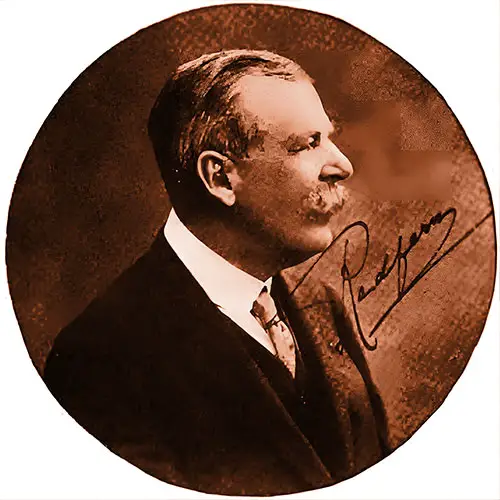
PLATE 19 A. Redfern Portrait. (Economics of Fashion, 1928) | GGA Image ID # 225587c3f6
🧵 Review & Summary: House of Redfern – The Empire of Elegance at Sea and Stage
The GG Archives' in-depth profile of the House of Redfern is a masterclass in historical fashion documentation, offering an unparalleled window into the world of early 20th-century couture and its connections to ocean travel, elite society, and global culture. 🎩🚢
Originally a British tailoring firm based in Cowes, Redfern evolved into one of the leading fashion houses in Paris, dressing royalty, aristocrats, actresses, and travelers in equal measure. Through a mix of vivid narrative, captivating photography, and remarkable primary sources, this page is ideal for:
👗 Fashion Historians – tracing the evolution of couture and high-end tailoring
📚 Teachers & Students – using fashion to study class, gender, and design history
🌍 Genealogists – identifying the cultural markers tied to elite travel and attire
🎭 Theater & Costume Designers – understanding stage vs. real-world fashion influence
🧳 Ocean Travel Scholars – observing how fashion shaped the image of travelers aboard luxury liners like the RMS Titanic
Downloadable Student Worksheets
Tailored for different academic levels exploring the House of Redfern and its impact on fashion and history [PDF]:
- 📘 Download Middle School Worksheet (Grades 6–8)
- 📄 Download high school studen worksheets (Grades 9–12)
- 🎓 Download University-Level Worksheet
Table of Contents
- Introduction: The Legacy of Redfern
- Redfern’s Role in Ocean Travel Fashion
- Royal and Aristocratic Patronage
- The Paris Salon and Fashion Wars of 1918
- The House Reborn: Robert Piguet and the 1920s Revival
Iconic Redfern Designs (Gallery + Captions)
- Evening Gowns
- Afternoon and Walking Dresses
- Stage Costumes and Tea Gowns
- The Redfern Corset and Ready-to-Wear Lines
The Theater Debate: Fashion vs. Drama (Chez Madame Translation)
Biographical Snapshot of John Redfern & His Sons
Advertisements and Period Fashion Commentary
Bibliography & Source Credits
Introduction: The Legacy of Redfern
John Redfern & Sons, Ladies' Tailors
John Redfern & Sons, Ladies' Tailors, Old Conduit House, 26 and 27. Conduit Street, and 27, New Bond Street, W; and at Edinburgh, Manchester, Cowes, Nice, Paris, and New York.—The application of the creative talent and executive faculty of the skilled and experienced tailor to produce ladies' outward apparel is a notable development of our nineteenth-century spirit of progress.
The excellent results accrued from that application are due to the enterprising initiative of Messrs. John Redfern & Sons of Old Conduit House, who originated the artistic trade that has, under the name of ladies' tailoring, become an indispensable adjunct of modern fashionable life.
The history of this eminent house, whose establishments are now so well known in the grand fashion centers of the Old and New Worlds, dates from the year 1808, when it was inaugurated at Cowes, Isle of Wight. At this favorite resort, the headquarters of all that is fashionable in connection with our greatest aquatic sport and pastime, the firm for many years did a large and flourishing business in the making of yachting jackets and costumes for ladies resident in the island or visiting Cowes during the season.
Their superior productions in this class of garments gradually induced ladies to place orders with the house for costumes of other descriptions. The continuous influx of these orders and the consequent expansion of the business considerably beyond the limits of its former scope caused Messrs. Redfern to perceive the opportunity for the institution of a house devoted entirely and exclusively to ladies' tailoring of the highest class.
They accordingly opened their first London establishment at 26 and 27 Conduit Street, determined to conduct it solely upon these lines. This was twelve years ago, and the result of the step was certainly not left in doubt, for within a brief period, there commenced an increase of business that, constantly calling for more accommodation, obliged the firm to extend their fine premises into New Bond Street.
Many other businesses of the same description have since come into existence. However, the firm that led the van a dozen years ago still maintains its supremacy. Wherever in the world she may reside, every well-dressed lady knows the name of 'Redfern". She appreciates the causes of its great renown.
The English Press has decided that Messrs. John Redfern & Sons are "the most noted firm of ladies' tailors in the world, and withal the most original." This is, indeed, high commendation, but it expresses no sentiment of praise that cannot, with complete justice, be applied to the famous house in question.
Messrs. Redfern has opened branch establishments from time to time at various addresses, each branch under the personal superintendence of one of the firms, and in each case—at Edinburgh and Paris, at Nice and New York—a distinct success has been the reward of enterprise.
The latest venture was the opening of Carly in 1888, the establishment of the branch in Manchester, and the firm's connection in Lancashire, having assumed proportions of magnitude and importance warranting such a step. The Manchester branch is under the same capable control and management as the London establishment.
In the spacious salons of Old Conduit House, each season of the year receives perfectly adequate representation. It would be difficult to conceive anything more comprehensive than the stock of displayed materials abounding in pattern, shade, and texture novelties and embodying many beautiful fabrics specially manufactured for the firm, who are the exclusive proprietors of their designs, ensuring that every garment is a unique and privileged possession.
Lytton's 'Ione" obeyed not custom but commanded it, and the same may be aptly said of Messrs. John Redfern & Sons. In contrast, others follow fashion and create it.
Charmingly original and unique ideas are incorporated in every garment of Mr. Redfern's production. Although his artist-workmen are the best that can be procured or trained, he bestows his attention upon every order received, making it a special aim and study to impart a distinct individuality to each gown, jacket, or coat, as well as to distinguish it by the very perfection of fit, finish, and good taste, ensuring that every detail is meticulously crafted to instill confidence in the quality of the products.
Messrs. Redfern makes costumes for every occasion and all indoor and outdoor wear—costumes for the lochs, the moors, and the mountains. For walking, traveling, shooting, yachting, and driving, tea gowns and matinées, dinner and reception robes, and magnificent Court presentation dresses —all these are specialties of the house, ensuring that every customer, regardless of the occasion, feels catered to and considered.
Mantles, cloaks, ulsters, wraps, covert coats, reefers, and promenade jackets are all represented among the productions of the firm in ladies' outer attire and are, in every instance, marvels of style and finish. Riding habits are made in the newest designs for the Park. The hunting field and exceptional staff are retained to produce fashionable hats—the Redfern styles in which respect are not to be excelled for exquisite grace and neatness. Private fitting rooms enable customers to try garments in perfect seclusion and convenience.
Messrs. Redfern can consistently execute country orders to the entire satisfaction if a well-fitting bodice is forwarded as an 8 guide to measurements. Many hands are employed, men of first-class skill and experience, thoroughly trained by the firm, and all work is executed on the establishment in spacious, well-ventilated, and commodious apartments, provided and arranged for the purpose.
The clientèle of the house is entirely of the most distinguished character, and the patronage enjoyed includes that of H.R.H. the Princess of Wales, the Imperial and Royal Families of Europe, and ladies of rank, fashion, wealth, and the highest social status in the United Kingdom, the Continent, the United States, and the chief centers of Colonial society.
Redfern’s Role in Ocean Travel Fashion
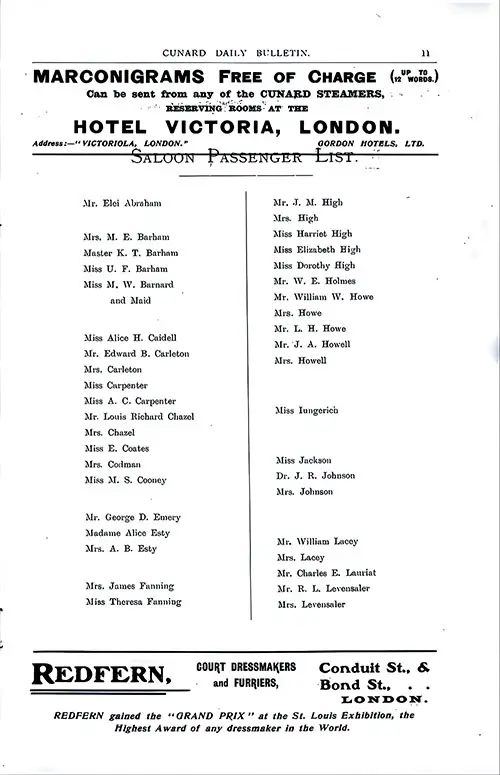
Redfern Advertisement on a Saloon Passenger List, Page 1 of 2 from the Cunard Daily Bulletin, RMS Ivernia Edition for Wednesday, 28 June 1905. GGA Image ID # 1318116bb2

Page 1 of 2, RMS Umbria Saloon Passenger List, 22 July 1905, Liverpool to New York via Queenstown. GGA Image ID # 13257c043e

Saloon Passenger List, RMS Carmania Onboard Publication of the Cunard Daily Bulletin for 7 June 1906. GGA Image ID # 1311a603df

Saloon Passenger List, RMS Campania, 19 January 1908 Published in the RMS Campania Edition of the Cunard Daily Bulletin for 24 January 1908. GGA Image ID # 131154c230

RMS Lusitania Salonn Passenger List for 6 June 1908. Published in the Cunard Daily Bulletin, Lusitania Edition, 10 June 1908. GGA Image ID # 131ff6c130

SS Ivernia Saloon Passenger List for 15 July 1908, Boston to Liverpool via Queenstown (Cobh). Published in the 22 July 1908 SS Ivernia Edition of the Cunard Daily Bulletin. GGA Image ID # 131d313da5
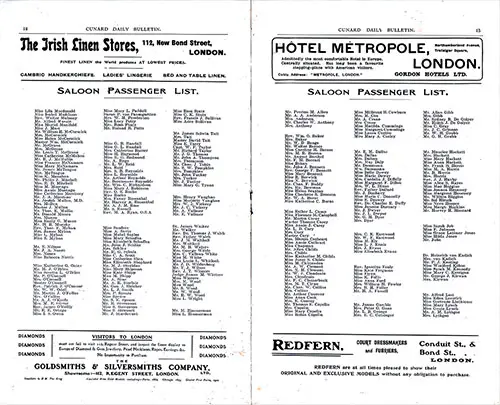
Saloon Passenger List included in the 11 September 1908 Etruria Edition of the Cunard Daily Bulletin. GGA Image ID # 13124c83d3
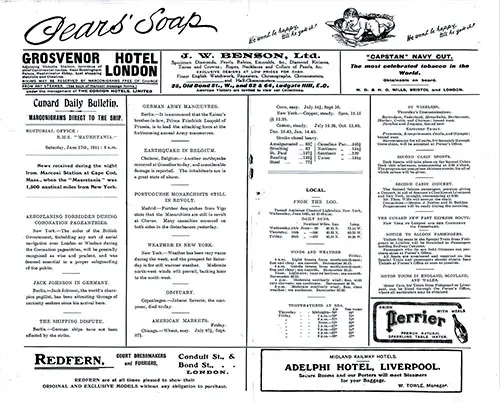
Marconigrams Direct to the Mauretania, Cunard Daily Bulletin for 17 June 1911. GGA Image ID # 132cca4411
Royal and Aristocratic Patronage
The Paris Creators of Apparel Style: Redfern
Redfern, another of the older couturiers of Paris, was established by an Englishman from the Isle of Wight. Redfern, Worth, Rouff, and Paquin were the leading establishments in Paris from 1890 down to 1905. Redfern's patronage consisted mainly of the members of noble and aristocratic families.
For years, a large part of the patronage of Princess and later Queen Alexandra of England came to this house. Since 1920, the character of this house has dramatically changed to be in line with the fashion requirements.
New designers have been employed, and while the house of Redfern was superseded for a time by the younger stars in the couture field, it is again enjoying success as one of the leading Paris establishments under the directorship of Robert Piquet, a designer trained by Poiret.
For a period before the World War, Redfern attempted to conduct a complete dressmaking unit in New York. Still, it is reported that this failed financially. English interests own the present company.
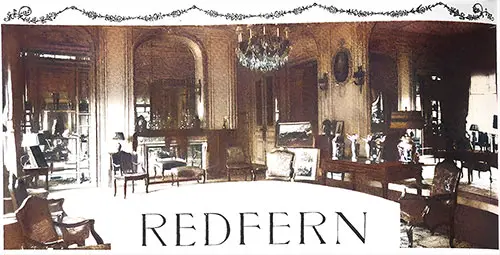
A King of the Grecian Line
Modest, unassuming title, isn't it, for a man to choose for an article by himself about himself? I am afraid it sets me down at once, as having what Mr. Kipling calls "too much ego in my cosmos." But after all, it isn't a name that I made up myself, but one that is given me here in Paris, half derisively, perhaps, by dressmakers who place color and effect before line and who good-naturedly allow me my laurels in the field that I have marked out as peculiarly my own. My fashion philosophy, unique and distinct, sets me apart in the world of couture.
Every couturier likes to feel there is one thing he does particularly well and that his specialty is the most significant phase of artistic dressmaking. I have always emphasized my work online—the Grecian line, preferably, for I consider it the most graceful and genuinely artistic basis for modern dress.
My conception of fashion sets aside anything that is extreme and ridiculous. Some fashion houses and good fashion houses create particular styles and make them up for their customers without the slightest change or modification. It is not uncommon a sight in Paris, at the races or the Ritz or the Palais du glacé, to see half a dozen women, unlike in figure and coloring, wearing exact replicas of each other's gowns.
With us, a woman can have an individual style that has far greater distinction than anything she can achieve as a mere copyist, no matter how clever her dressmaker may be. We try to make a study of each woman who comes to us.
We weigh every detail of her dress, including her face and figure, and we choose for her among the many phases of the new fashions, which is best calculated to enhance her beauty.
Our meticulous attention to detail in dressmaking is always relatively simple—the Grecian trend again—and ensures the highest quality in our designs. Materials and trimmings are always subordinate to the line.
I am a strong lace advocate and will use it significantly this Spring. With it, I will use taffetas, both the plain and the shot, or glacé, as we call it here. There is a new velvet for Spring that is very light in weight and is really more like an épinglé or Ottoman than a velour. I also recommend very supple brocades, damasked silk, and the new silk and crépon brochés.
As for new styles, there is the beginning of a movement toward the fashions of the eighteen sixties and seventies. There have been indications of such a change for months, and I have been making dresses inspired by that period for Sorel and Mégard.
Skirts will be slightly wider, but the change will not be pronounced. I use a fairly short skirt a couple of inches off the floor for outdoor gowns and walking suits. Still, for carriage and housewear, I advocate longer skirts. I advise wearing a skirt that touches the ground and breaks a little while walking for visiting gowns. In house dresses, I make the skirts rather short in front with a very long train at the back. These historical influences in my designs connect us to the rich heritage of couture.
The new sleeves are interesting, for no two of them are alike, and they are all quite different from anything we have used for some time past. I use both the long and short sleeves, the kimono sleeves, and the separate sleeves.
With the long sleeves, I frequently use a deep cuff that comes to the elbow, where the sleeve is joined to it with a slight fullness that is more generally becoming than a perfectly plain sleeve.
In many of my new gowns, especially draped dresses, I am using a modified princess effect, which I am very partial to. It reveals the lines of the figure and is more graceful and becoming than the straight Empire lines. I prefer not to define the waist in my dresses, but I use a waistline slightly above the normal wherever I do.
I am making many taffeta dresses for early Spring and trimming them with ruching and puffings after the fashion of the eighteen-seventies. One of my latest models is made of shot blue, red, and green chameleon taffetas. It is made with a silk overskirt, relatively short in the front but reaching the floor in the back, with its lower edge bound with a heavy chenille ruche in the three colors of the silk. The underskirt is of gray maline lace, hemmed with a double ruffle of the taffetas.
The dress is a taffeta picture coat with a slightly high waistline and a peplum that follows the same line as the overskirt. It is edged with the chenille ruche, or "silk marabout," to give it its French name. The coat collar is made of two ruffles of maline lace brought down quite low on the bust and held in place by a big chenille-covered button. The kimono sleeves end at the elbow over an undersleeve of maline lace gathered on the featherbone.
I used the new épinglé velvet in a striped blue-and-black dress trimmed with rose-pink velvet. The gowns were slightly draped—a long overskirt lapped in front and separated below the knee over an underskirt of pink velvet.
The front of the waist is laid in plaits at the shoulder-Gilson plaits; I think you call them, which form a deep round collar in the back. It is trimmed with a relatively narrow one-sided reverse faced with pink velvet and a smallish collar" white satin covered with Venise lace and worked in a vermicelli pattern in an old-gold braid and rose and almond silk embroidery.
The sleeve is sewn into a small arm under the plaits. The top of the sleeve is rather full and is gathered into the armhole at the shoulder and into a deep cuff at the elbow.
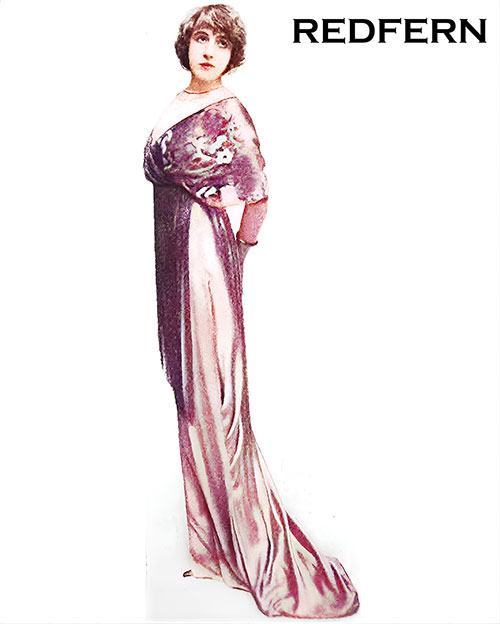
Egyptian Chiffon Gown by Redfern. (The Delineator, March 1912) | GGA Image ID # 22568cce22
The evening gown in the photograph is made of a rather interesting double-faced material: satin on one side and royal blue silk on the other. The right side of the waist is made of black tulle embroidered with gold thread. String-colored cotton is used over a chemisette and under sleeves of pink tulle, which are gathered in at the neck and elbow with guipure point de Venise edged with strings of diamonds.
The left side of the waist is of apricot-colored tulle embroidered with round and tubular crystal beads. A long fringe or peplum of the beads forms a skirt that does not quite reach to the knees and droops a little below them in the back.
The violine satin skirt is open above the right ankle and caught up with six plaits above a foundation skirt of black tulle. The gown that Drian has sketched is made of Egyptian-red chiffon stamped in gold and fringed with gold beads. It is draped like an antique scarf around the figure and is one of the year's most graceful and artistic models.
All our gowns are exhibited in a grand drawing room furnished after the Louis XVI and Empire periods. The carved paneling on the walls is in Trianon gray and white, relieved by four medallion drawings in red chalk. The windows of our showroom overlook the Orangerie of the Tuileries.
The House of Redfern has been established in Paris since 1881. We make many dresses for the stage and have gowned some of the most famous French that only in modern costumes but for their historical roles call for careful study of bygone periods of dress.
By Redfern, Paris.
The Paris Salon and Fashion Wars of 1918
The Paris Salon and Fashion Wars of 1918
Redfern is a bluff, grizzled Englishman, a veteran of many a style campaign, who has lived most of his life in Paris and some of it in New York, where he unsuccessfully attempted to establish a branch house.
He is courteous and approachable, and he sticks a horn-rimmed monocle in his eye when he reads anything. The French Government picked Redfern to act as generalissimo of the column that la couture sent against the petticoat hosts of Vienna in 1918.
Only a Frenchman can understand the national pain if Paris were to lose her style supremacy. The Parisians would erect a statue of Goddess Fashion and keep it draped in black, as they did the Strasbourg monument in the Place de la Concorde, until they had restored the divinity to her sanctuary.
Therefore, the Germans, among their other attacks, drove against La Couture, and La Couture rose in her might to defend her position. The earliest feint of the enemy came before America and her followers got into the war.
The Vienna couturiers announced that they had wrested themselves from the Parisian-style oligarchy and invited the buyers of the neutral world to see what Vienna had been producing. The buyers, America's among them, went and looked and took the first trains back to Paris to stock their regular lines.
Defeated in this skirmish, the enemy reserved his most serious onslaught until the spring of 1918. With the world now at war, bringing buyers into Vienna was no longer possible. The Viennese couturiers, therefore, sent a great exhibition of models to the neutral ground of Zurich, Switzerland, and told friend and foe that the Parisian dictatorship was at an end and that if the world wanted style according to Vienna, which was to be the only style, it would have to come to Zurich to get it.
Synchronously Big Bertha was sending her fatal calling card into Paris every twenty minutes, the German military drive was on, and the Nauen wireless was boasting that la couture was in flight. But la couture, though under fire, was not shaken.
One day, a Gotha dropped a bomb into the nest of dressmaking houses surrounding the Place Vendôme and shattered their fronts. Premet's salon retains a souvenir of that occasion — two shrapnel holes drilled so neatly through a mirror that there are scarcely any cracks radiating from either, and under the holes is etched the date: "28 Juin, 1918."
An air bomb cleaned up the goldfish pond in the Tuileries Garden under Redfern's windows. The Redfern midinettes bent over their stitching as the spent shrapnel pattered on them the roof. The Redfern mannequins controlled the trembling of their knees.
The Zurich challenge was not to be ignored. General Redfern, commissioned to lead the counterattack, recruited Fashion's Hierarchs, the flower of la couture—her choicest models, her most chic mannequins, and her most persuasive vendees—and boarded a special train for Zurich, where the battle was joined in the presence of the world's commercial clothes buyers.
The rout of the mannequins of Vienna was complete. As General Redfern himself said, it was a washout for the Austrians. When Redfern took young Robert Piguet away from Poiret, it was a great business stroke for the house, which had fallen into one of those aristocratic declines which sooner or later overtake all the older establishments when their designers grow conservative and come to regard the latest fancies as just a little bit mad if not actually out of taste.
Of course, such a house as Redfern's, which gowned Queen Alexandria and most British nobility, can never lapse lower than the plane of dignified mediocrity. Still, the clients who remain faithful will be older women who have begun to think that the signature on a gown is more important than its lines.
But Piguet has brought gorgeous youth back into these salons, and once more, the name of Redfern is heard on the lips of the ultra-chic.
Watered silk—black or dark blue—and black silk braid compose this Redfern Russian blouse costume. The braid ornaments, set with handsome buttons of white agate with raised black centers, are laid across two flat unstitched folds that finish the front edges.
The large, square collar, cut after the new fashion to end just over the top of the shoulder line, is covered with braid work. Cut on circular lines, the coat's skirt, while sewed without fullness to the blousing body part, flares a good deal at the hem.
The collar has a straight line across the back from shoulder to shoulder. Two buttons like those on the front are used above the seam at the back and two below. The upper skirt is finished at the center back with a narrow box pleat, which extends just a little below the edge of the overskirt. All this gives the prevailing effect of the narrow look at the foot.
Using two materials, taupe-colored moiré gauze and matching figured chiffon, the elaborate effect of the handsome toilette shown in the drawing is easily obtained. String-colored lace forms the little V at the neck, and the folded belt is of willow-green satin. Gowns of this sort, worn with a separate coat, are particularly well adapted for matinées, tea rooms, and hotel dinners; in fact, in Paris, they are the usual afternoon outfit.
The House Reborn: Robert Piguet and the 1920s Revival
Fashion’s Hierarchs
There is all the difference between him and old Redfern, head of the famous house. Redfern is a bluff grizzled Englishman, a veteran of many a style campaign, who has lived most of his life in Paris and some of it in New York, where he once attempted unsuccessfully to establish a branch house. He is affable and approachable, and when he reads anything, he sticks a horn-rimmed monocle in his eye.
The French Government picked Redfern to act as generalissimo of the column that la Couture sent against Vienna's petticoat hosts in 1918. Only a Frenchman could understand the national pain if Paris lost her supremacy in style.
The Parisians would erect a statue of Goddess Fashion and keep it draped in black, as they did the Strasbourg monument in the Place de la Concorde until they had restored the divinity to her sanctuary. The Germans, therefore, among their other attacks, drove against La Couture, and La Couture rose in her might to defend her position.
When Redfern took young Robert Piguet away from Poiret, it was a great business stroke for the house, which had fallen into one of those aristocratic declines which sooner or later overtake all the older establishments when their designers grow conservative and come to regard the latest fancies as just a little bit mad if not actually out of taste.
Of course, such a house as Redfern's, which gowned Queen Alexandria and most British nobility, can never lapse lower than the plane of dignified mediocrity. Still, the clients who remain faithful will be older women who have begun to think that the signature on a gown is more important than its lines. But Piguet has brought gorgeous youth back into these salons, and once more, the name of Redfern is heard on the lips of the ultra-chic.
Iconic Redfern Designs (Gallery + Captions)
Evening Gowns
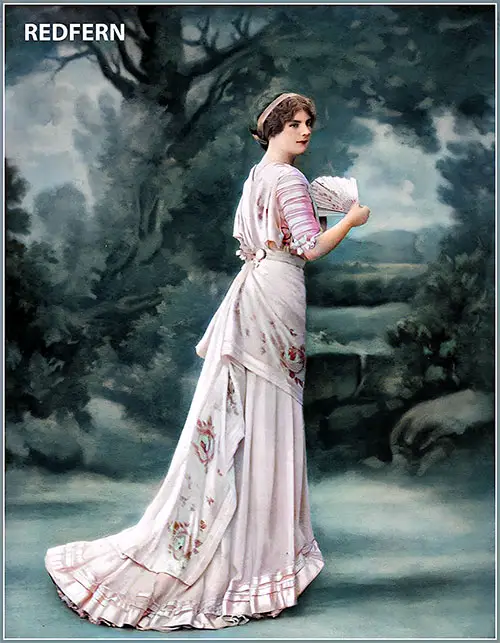
Dinner Gown by Redfern. (Les Modes, July 1908) | GGA Image ID # 2258787970
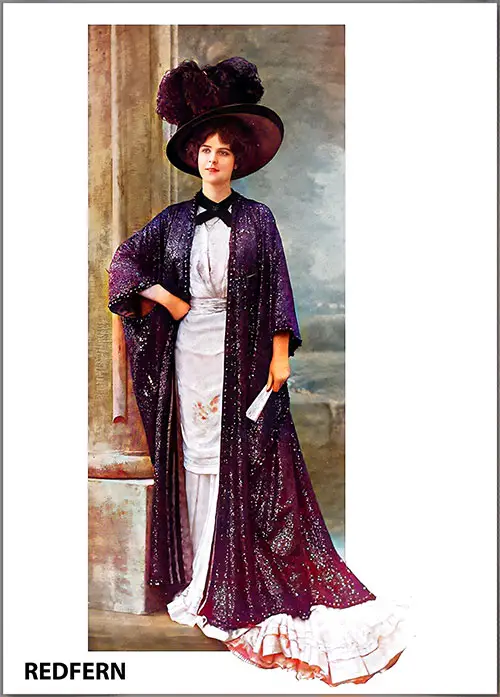
Dinner Dress and Evening Coat by Redfern. (Les Modes, September 1908) | GGA Image ID # 22582a868b

Jet, Embroidery, and Lace. This Evening Gown by Redfern Features a Closely Fitted Overdress Adorned With Long Jet Fringe Layered Over a Black Velvet Princess Gown. Lace Embroidery and Rose-Colored Velvet Grace the Décolletage and the Sleeves. Photograph by Félix, Paris. (Dry Goods Economist, 11 September 1909) | GGA Image ID # 22557e1aa0

A Beautiful Redfern Gown Worn by the Lady Mayoress at the Guildhall Banquet. The Gown, Designed by Mr. Poynter Redfern, Is Truly Remarkable. It Is Made of Aluminum Lace Over Silver Tissue and Features a Stunning Peacock-Blue Velvet Train Embroidered in Silver and Diamante. the Lady Mayoress, Demonstrating Her Usual Kind-Heartedness, Requested That Mr. Redfern Incorporate as Much Intricate Work as Possible, Recognizing That Many Skilled Needlewomen in Paris and London Struggle Due to the War. Mr. Redfern’s Design Showcases His Signature Long Lines. the Dress Is Composed of Exquisite Aluminum Lace, Elegantly Draped With an Artistic Touch. Highlights of Peacock-Blue Satin Are Cleverly Introduced Throughout. the Train, Made of Peacock-Blue Velvet, Is Complemented by a Small Lace Cape. The Embroidery on the Train Is Done in Aluminum, and Its Intricate Craftsmanship Must Be Seen to Be Fully Appreciated. in Addition, the House of Redfern Was Also Responsible for Designing the Dresses for the Maids of Honor. These Dresses Featured Pale Pink Satin Delicately Veiled With Silk Gauze and Trimmed With Swan’s-Down and Pink Roses Adorned With Silver Leaves. (The Tatler, 22 November 1916) | GGA Image ID # 225d04ae38
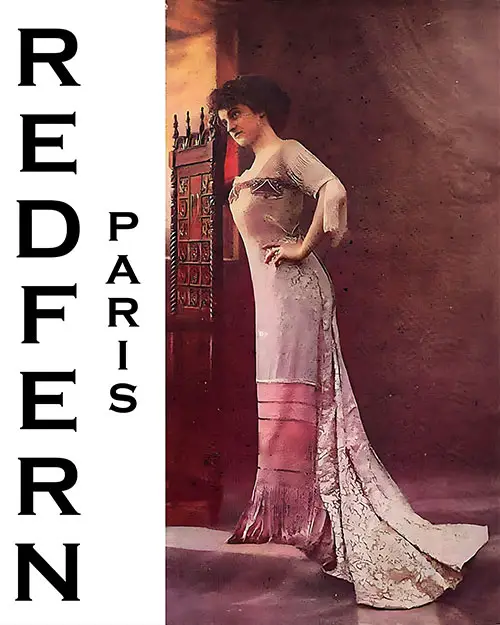
Introducing a Princess Evening Gown Made From a Figured Marquisette, Beautifully Adorned With Crystal Beads and Fringe. the Upper Part of the Corsage and the Sleeves Are Entirely Made of Beads. This Spring, Marquisette Is Set to Be One of the Most Popular Materials. Created by Redfern in Paris. (The Theatre, February 1910) | GGA Image ID # 225956948e
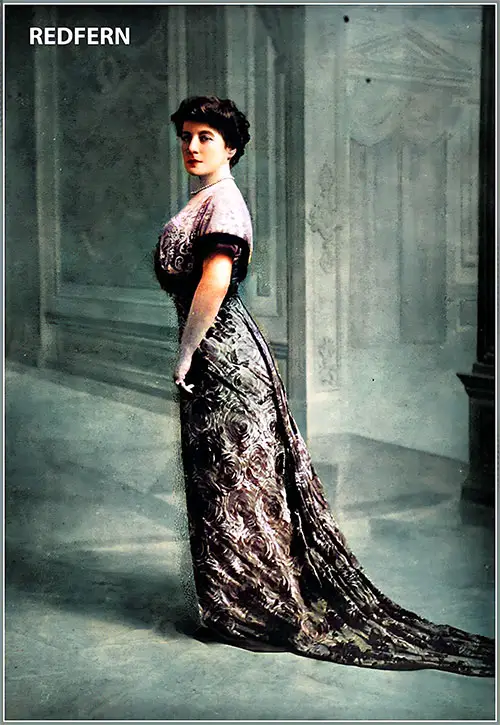
Dinner Gown by Redfern. Mme Andrée Mégard Wears a Greek Dinner Dress. Caralina Dress Trimmed with Gold Lace. Large Peplum Coat in Panne Velvet Lined with Coralina. (Les Modes, January 1912) | GGA Image ID # 2257a9f295

Evening Coat by Redfern. Photo by Félix. (Les Modes, Issue 180, January 1919) | GGA Image ID # 1cd9a749db

Evening Gown by Redfern. Photo by Chéri-Rousseau. (Les Modes, Issue 181, February 1919) | GGA Image ID # 1ce109014f

Evening Gown by Redfern. Photo by Félix. (Les Modes, Issue 189, November 1919) | GGA Image ID # 1cdfffca96
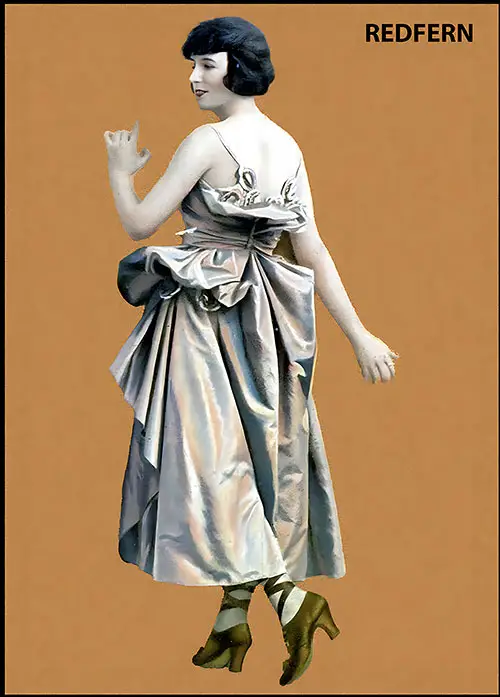
Evening Dress by Redfern. Photo by Talma. (Les Modes, Issue 191, January 1920) | GGA Image ID # 1cd7d8ecf9

Dinner Dress by Redfern. Photo by Talma. (Les Modes, Issue 197, July 1920) | GGA Image ID # 1cd7f4da56

Déshabillé by Redfern. Photo by Talma. (Les Modes, Issue 197, July 1920) | GGA Image ID # 1cd813cba0
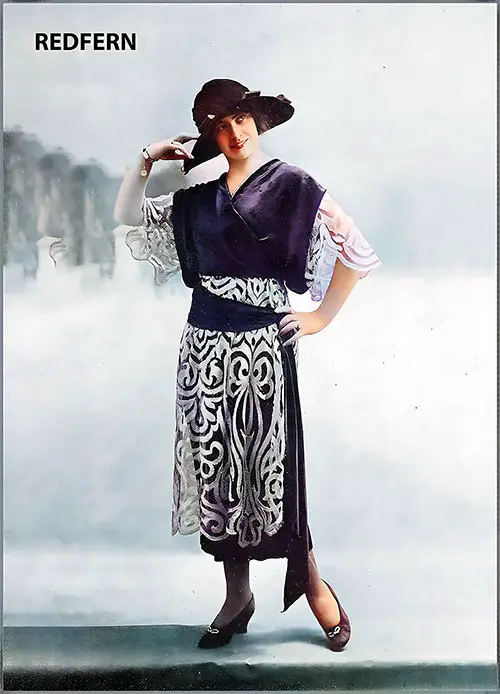
Dinner Dress by Redfern. Photo by Talbot. (Les Modes, Issue 199, September 1920) | GGA Image ID # 1cd856faad

Evening Gown by Redfern. Photo by Talbot. Black Tulle Dress, With Diamond-Trimmed Points on a Pink Background. Silver Mesh Bodice; Blue and Silver Lamé Belt. (Les Modes, Issue 200, December 1920) | GGA Image ID # 1cd95c8060
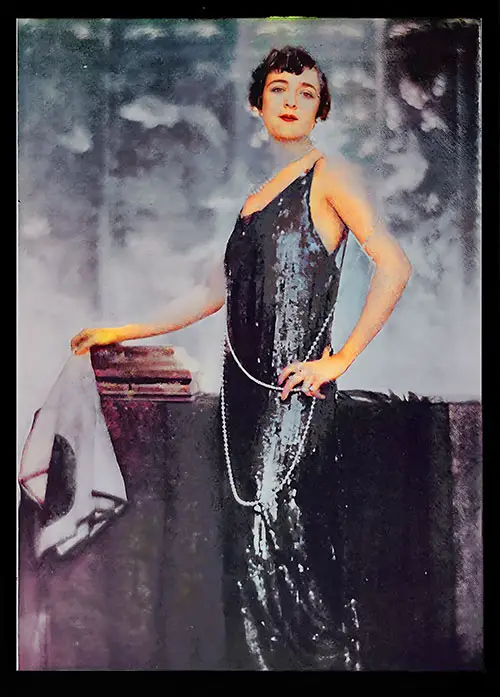
A Redfern Gown Made of Soft Black Paillettes Transitions to Gray at the Bodice, Blending From Sparkling Black to a Subtle Gray. the Comtesse de Segonzac Carries a Large Gray Crepe Handkerchief Instead of a Fan. (Harper's Bazar, April 1924) | GGA Image ID # 2256dd62e2
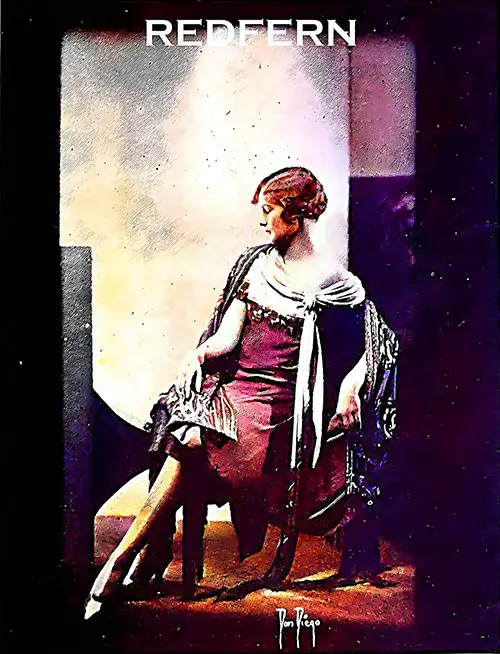
The Picture Features a Charming Dress, an Original Design by the Parisian Designer Redfern. While the Name Doesn’t Sound Distinctly French, and the Design Isn’t Purely French Either, It Does Have a Spanish Influence, Though It Isn’t a Traditional Spanish Dress. Additionally, the Fabric Is a Vibrant New French Rayon Crepe. Although Miss Dorothy Smart Does Not Typically Embody the Spanish Style, This Dress Suits Her Surprisingly Well, Thanks to Its Striking Rayon Fringe, Intricate Beadwork, and Soft Crepe Texture. (Dresses Magazine, June 1928) | GGA Image ID # 22553effc2
Afternoon and Walking Dresses
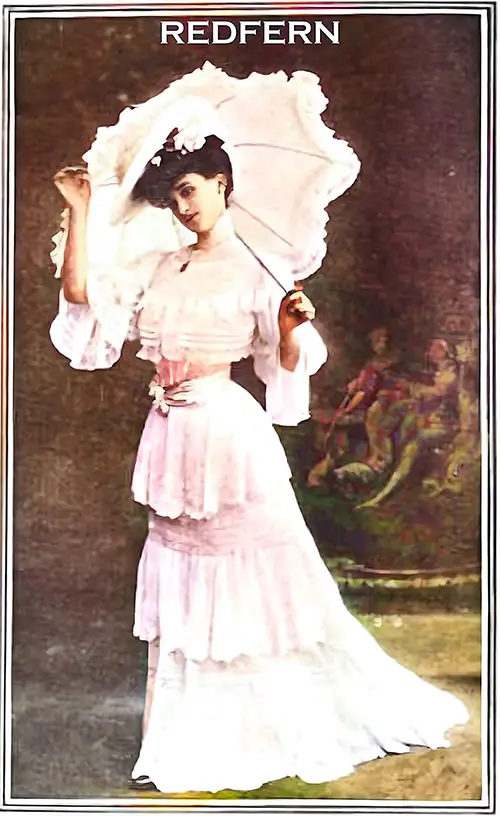
Casino Dress by Redfern. The Illustrated Gown Accurately Depicts Dress Styles Seen at the Casino and on the Promenade During the Afternoon. (The Sphere, 13 August 1904) | GGA Image ID # 225b2b78e1
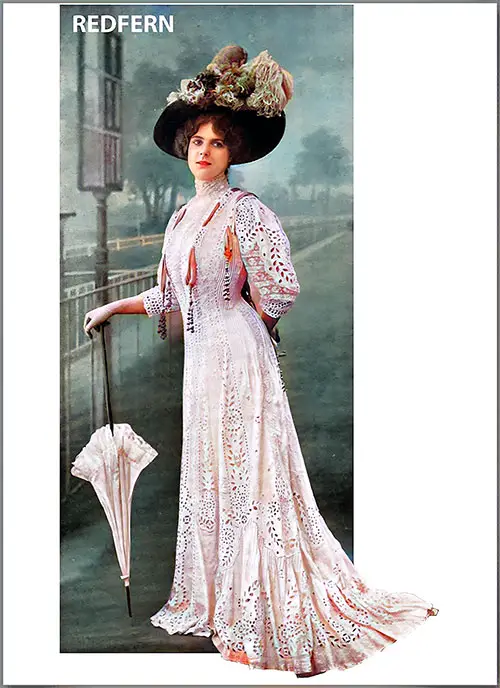
Garden Party Dress by Redfern in Rose Crêpe de Chine Embroidered with Corn Flowers. (Les Modes, August 1908) | GGA Image ID # 22590309dc
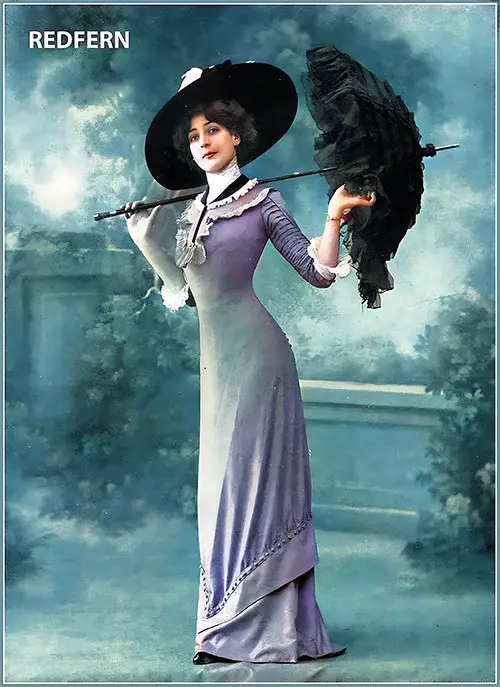
Afternoon Gown by Redfern, in “Indro” Silk. Photo by Félix. (Les Modes, Issue 112, April 1910) | GGA Image ID # 1ce228ec46
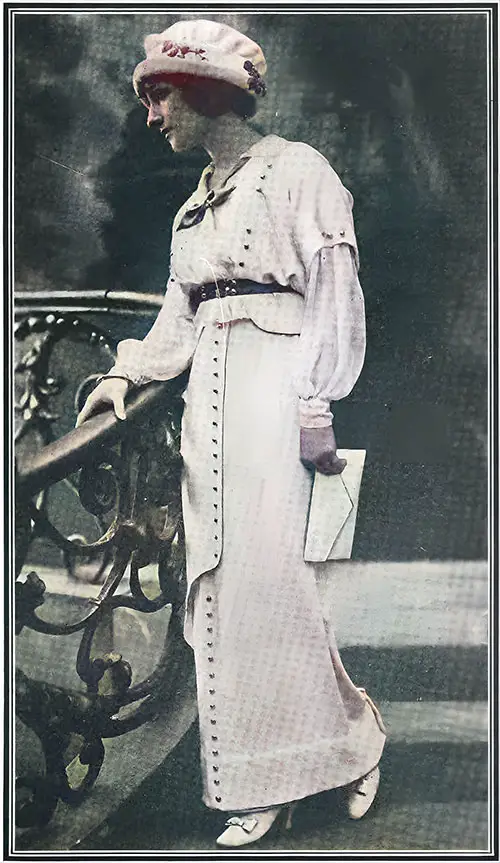
A Demi-Tailored Frock of Cream Serge Features a Skirt With a One-Sided Tunic Adorned With Gilt Buttons. the Blouse Has an Epaulet Cap and Full Sleeves, Complemented by a Cerise Belt and Cravat. the Model Is From Redfern, Paris. Photo by Talbot. (Crerands Cloak Journal, April 1913) | GGA Image ID # 22553ae87f
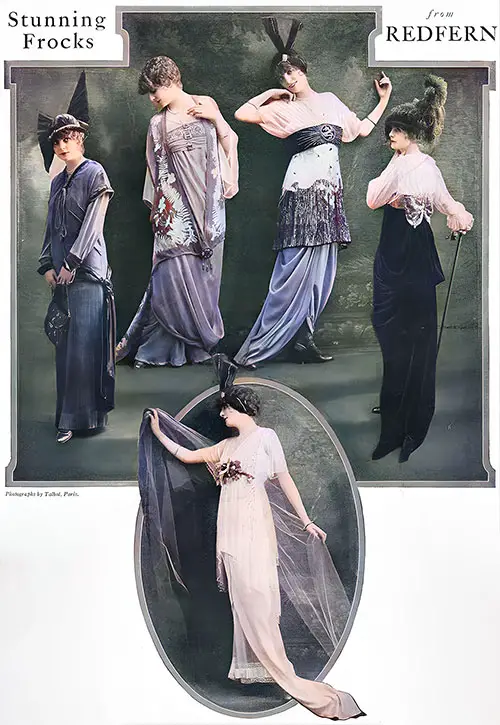
Stunning Frocks from Redfern. (Harper's Bazar, November 1913) | GGA Image ID # 224b239869
Stunning Frocks from Redfern Captions: (Top Row, Left to Right)
- Redfern features the plaited skirt in his costume tailleur. It is fashioned of charmeuse and carefully tacked and pressed to retain the narrow silhouette. There is a suggestion of the jumper in the blouse, which is finished at the neck and around the short kimono sleeves with embroidered motifs. The chiffon sleeves are finished at the wrist by deep cuffs fastened by cording, which carries out the idea given by the cording at the neck. The sash of the moire ribbon completes the costume and is run through straps.
- An exquisite hand-painted tunic makes the mousseline de soie tea gown magnificent. The tunic's long lines are continued in the skirt's drapery. The wide border of lace gives the corsage, which is decorated with curious Eastern medallions, a transparent effect. The flowing mousseline de soie sleeves are in harmony with the costume's conception.
- The mousseline tunic of the dinner gown is heavily embroidered in palettes and strass. It hangs straight and flaring from the empire waistline over a draped skirt of supple satin. The drapery of the skirt is ingeniously arranged to form a slash in the front. The transparent corsage of mousseline de soie loses itself under a wide velvet ribbon ceinture embroidered in strass.
- Redfern completes his three-piece velvet reception gown with a transparent chiffon bodice, which falls loose and blousy over a high ceinture of brocaded ribbon ending in the back in the Japanese bow. Deep frills of lace and chiffon soften the hand and add an old-world air to this charming creation. The velvet skirt shows the new mode of back drapery. A medium-sized hat topped with ostrich plumes is worn with this costume.
Stunning Frocks from Redfern Caption - Bottom Center:
- Soft draperies of tulle generously embroidered in pearls lend a charm to the satin evening gown. The satin is skillfully draped to reveal the tulle underskirt trimmed with lace. The tulle tunic, though not wired, is cut so full that it stands out gracefully from the figure. Bands of lace increase the sumptuous effect of this costume, and short transparent sleeves of tulle reveal the flesh tints of the arm enticingly. A scarf of tulle wound around the figure gives the silhouette a misty outline.
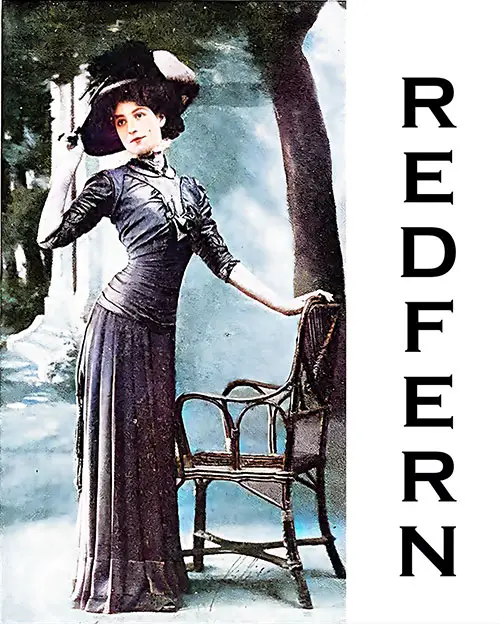
Gown from the Maison Redfern, Paris, 1901. (Modes and Manners, v4, 1914) | GGA Image ID # 225701e9b3

📸The Image Above Features an Afternoon “Empire” Gown Made of Cashmere Muslin Layered Over Sheer Scarab Green Fabric, Adorned With Matching Tone Ruching. Photo by Manuel. (Modes and Manners, v4, 1914) | GGA Image ID # 225735086c
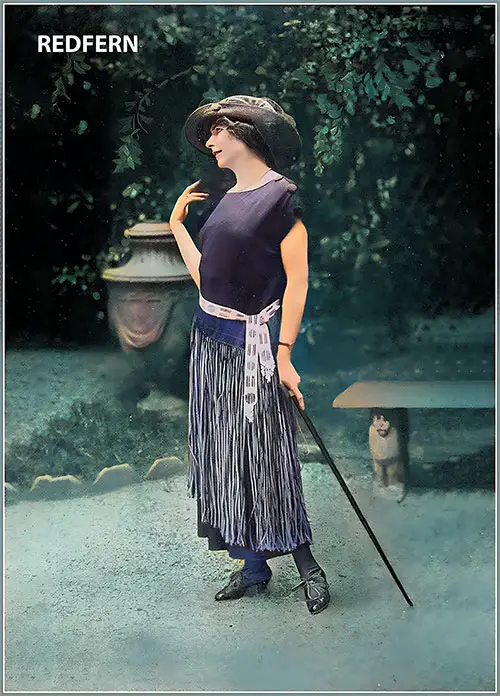
Mlle Damiroff, du Théatre de Paris Dressed by Redfern. Photo by Talma. (Les Modes, Issue 185, June 1919) | GGA Image ID # 1cdad0d700
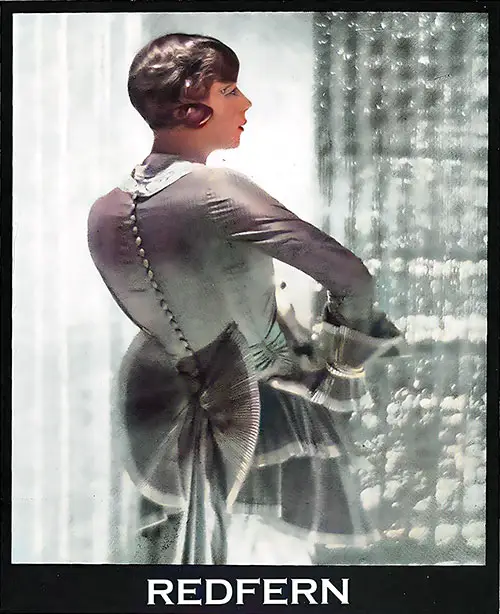
The Mauve and Blue Taffeta Gown by Redfern. (Harper's Bazar, July 1929) | GGA Image ID # 2267b4b07f
Stage Costumes and Tea Gowns
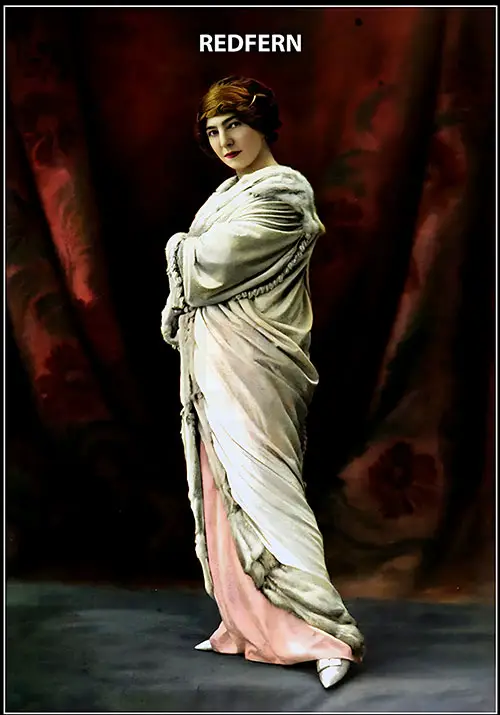
Dressed by Redfern in a Stylish Wrap of Panne Velvet Worn by Mme. Mégard.. (Les Modes, February 1912) | GGA Image ID # 22573c8188

Mlle Damiroff, du Théatre de Paris, Dressed by Redfern. Photo by Reutlinger. (Les Modes, Issue 182, March 1919) | GGA Image ID # 1ce06b4237

Dancing Dress by Redfern. Photo by Henri Manuel. (Les Modes, Issue 192, February 1920) | GGA Image ID # 1cd9d77891
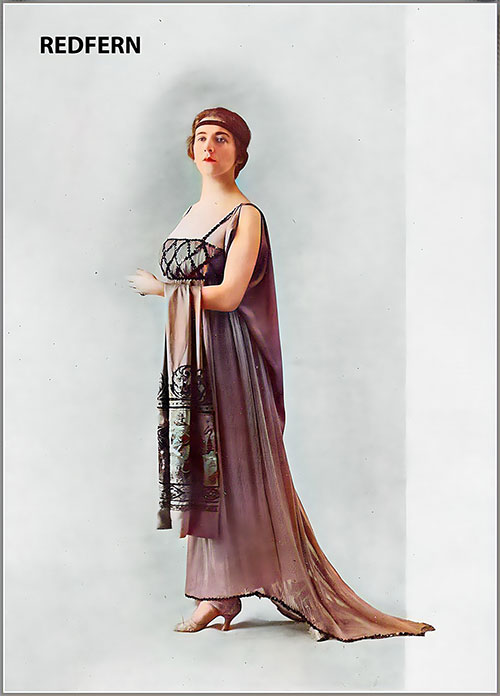
Mlle. Lysana, du Théatre de la Renaissance Dressed by Redfern. Mlle Lysana, Dressed in a Redfern Evening Gown in Embossed Blue Silk Chiffon on a Flesh-Colored Crêpe de Chine ground. Sash in Redcurrant Satin Crêpe; Byzantine Embroidery in Gold and Black Lamé. Bodice with Epaulettes and Jet Check. Photo by Félix. (Les Modes, Issue 200, December 1920) | GGA Image ID # 1cd9728a86 [Mlle LYSANA, habillée par REDFERN. Robe du soir en mousseline de soie bleue gaufrée sur fond de crêpe de chine chair. Écharpe de crêpe satin groseille; broderie byzantine lamé or et noir. Corsage avec épau- lettes et quadrillé en jais.]
The Redfern Corset and Ready-to-Wear Lines
New York.—Importance of Foundation Garment Emphasized by Fashion Coordination Chart.
The Spring issue of the Fashion Coordination Chart and the Fashion Coordinator, issued and distributed to stores throughout the country by the Fashion Coordination Bureau, again emphasizes the relation between the corset and the gown. It shows illustrations of the newest sports dresses, afternoon gowns, streetwear, and evening gowns, with corresponding illustrations of specific styles of Redfern corsets, which are specially adapted for wear with the various types of gowns.
The Fashion Coordination Bureau has significantly boosted the visibility of corset departments nationwide by underlining the intimate connection between the corset and gown to ready-to-wear departments. Their efforts have led to a surge in the development of corset departments across the country.
Upon receiving the charts and the magazine, many stores arrange meetings with the coordinator, the corset buyer and her team, and the ready-to-wear buyer and their team. The chart is thoroughly examined, and the corset department team is briefed on the latest dress trends. A detailed analysis is conducted to identify the corsets in the department that best complement sport gowns, afternoon gowns, and evening gowns, respectively.
The greatest good, however, comes from the fact that the ready-to-wear girls fully realize the importance of the corset in the finished ensemble, and definite arrangements are made for the interchange of service between the two departments. Sometimes, the corset department is asked to send a fitter into the ready-to-wear fitting room with garments adapted to the gown that the customer is buying in other departments. After telling the corset fitter what the problem is, she turns her over to the corset department.
Sometimes, the corset department sells two or three entirely different garments to one customer: one adapted for evening wear, another for sportswear, etc.
The combined service, which takes into account the expertise of each department, is significantly more beneficial to the customer than the individual service of each department.
The makers of Redfern corsets, through their cooperation with the Fashion Coordination Bureau, have been the prime movers in all parts of the country due to the closer collaboration between the two departments. Recently, advertisements for Loeser’s in Brooklyn, Bonwit Teller in New York, Hudson’s in Detroit, and scores of other stores across the country have been built around coordinating the costume and the foundation. This success story of Redfern corsets and the Fashion Coordination Bureau is a characteristic appeal by the most enlightened stores everywhere, making the audience proud of their association with the brand.
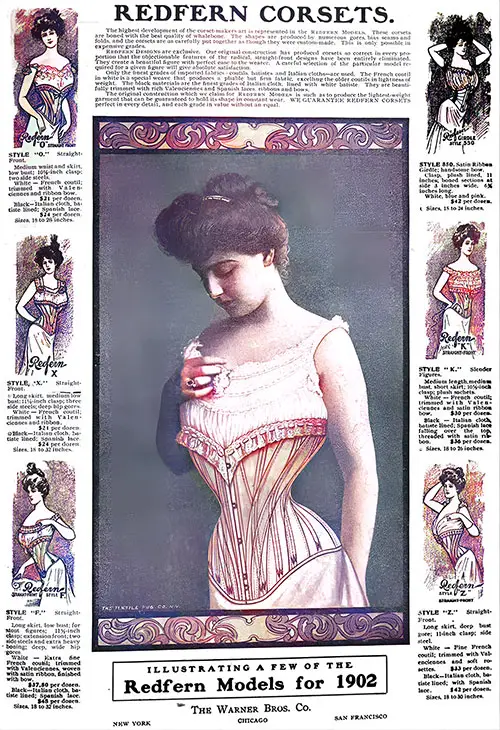
Advertisement: Redfern Corsets. Illustrating a Few of the Redfern Models for 1902. The Warner Bros. Co. (Chicago Dry Goods Reporter, 18 January 1902) | GGA Image ID # 225b1ac010
The Redfern Models Represent the Pinnacle of Corset-Making Craftsmanship. These Corsets Are Constructed Using High-Quality Whalebone and Feature Numerous Gores, Bias Seams, and Folds That Create an Elegant Shape. Each Corset Is Meticulously Assembled to Resemble a Custom-Made Fit, Which Is Only Achievable With More Expensive Models.
Redfern Designs Are Exclusive. Our Unique Construction Results in Perfectly Proportioned Corsets, Completely Eliminating the Undesirable Features of Traditional Straight-Front Designs. They Provide a Beautiful Silhouette While Ensuring Comfort for the Wearer. Choosing the Right Model for a Specific Figure Will Guarantee Complete Satisfaction.
We Use Only the Finest Imported Fabrics, Including Coutils, Batiste, and Italian Cloths. Our Unique White French Coutil Is a Uniquely Woven Fabric That Is Both Pliable and Firm, Surpassing Older Coutils in Lightweight Comfort. We Utilize the Highest Quality Italian Cloth, Lined With White Batiste. Each Corset Is Elegantly Adorned With Rich Valenciennes and Spanish Laces, Ribbons, and Bows for Our Black Designs.
Our Original Construction Technique for Redfern Models Ensures That We Produce the Lightest Possible Garment While Maintaining Its Shape Through Regular Wear. We Guarantee That Redfern Corsets Are Flawless in Every Detail, and Each Model Stands Unrivaled in Quality.
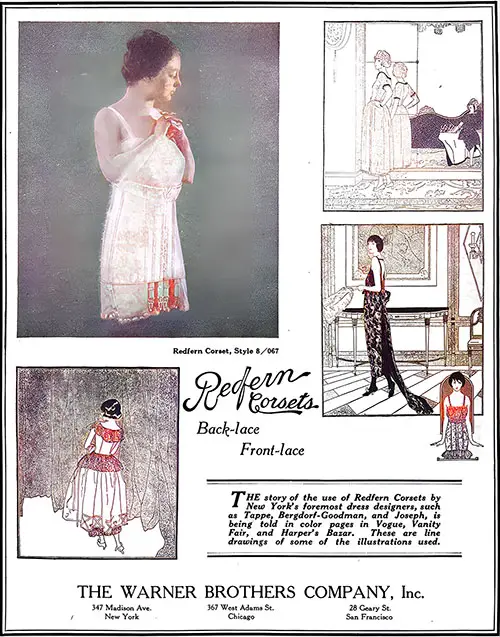
The Story of How New York’s Top Dress Designers, Including Tappe, Bergdorf Goodman, and Joseph, Utilized Redfern Corsets Is Featured in Colorful Pages of Vogue, Vanity Fair, and Harper’s Bazaar. This Includes Line Drawings of Some of the Illustrations That Were Used. (Dry Goods Merchants Trade Journal, July 1920) | GGA Image ID # 22554feae4
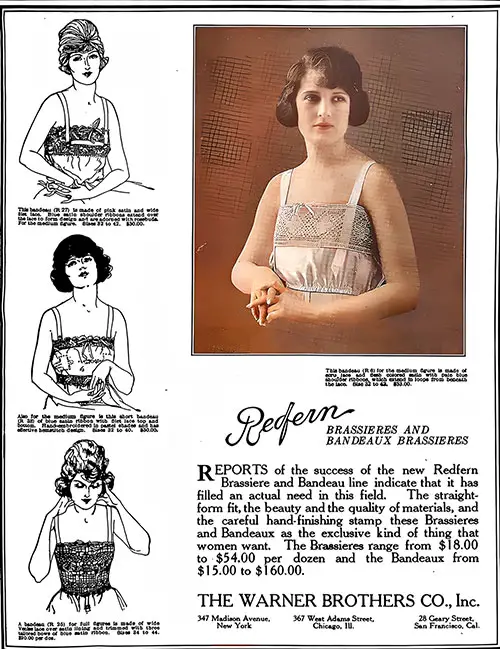
Reports on the Success of the New Redfern and Bandeau Line Indicate That It Effectively Meets a Real Need in the Market. the Straight-Form Fit, the Beauty and Quality of the Materials, and the Careful Hand-Finishing Set. These Brassieres and Bandeaux Apart as Exclusive Items That Women Desire. the Brassieres Are Priced Between $18.00 and $54.00 Per Dozen, While the Bandeaux Range From $15.00 to $160.00. THE WARNER BROTHERS CO., Inc. New York-Chicago-San Francisco. (Dry Goods Merchants Trade Journal, July 1920) | GGA Image ID # 225571cfc5
The Theater Debate: Fashion vs. Drama (Chez Madame Translation)
At Madame’s: The Very Important Chapter of Fashion — the Dress
In our last three articles, we briefly reviewed the outfits worn this season by fashionable women, young ladies, and little girls who equally deserve that stylish label.
The renowned fashion house on Rue de Rivoli dresses our most famous actresses. It is also, and even more so, the preferred supplier to foreign courts, the aristocracy, and the most elegant Parisian women. These days, theater fashion no longer exists in the same way.
Actresses wear the dresses their roles require. As many roles as there are, so too are there opportunities for the great couturier to show off his imagination and talent — bold, yes, but always respectful of the spirit of the play.
At one point, editorials in various newspapers nearly sparked an unfortunate quarrel between people who, by nature and by taste, were made to collaborate toward a shared goal: actors, theater directors, and fashion designers.
Playwrights complained that newspapers devoted more praise to actresses’ costumes than to the roles they played. The newspapers dodged the accusation, unwilling to admit that designers often paid to be flattered—something playwrights didn't do… at least not always. 😅
Then the moralists jumped in.
Critics, born under the star of Protest, wrote furiously about these so-called signs of decadence, claiming to defend Art—even though Art had never really been under threat.
And then the interviewers charged in... bringing back quotes, and more fuel for the fire.
🎭 Shakespeare had it right: Much Ado About Nothing.
Eventually, the public came to the same conclusion, and everything returned to normal. Authors kept writing good and bad plays. Actors kept performing their best. Audiences kept going to the theater—to learn something and to be entertained.
🎟️ Female theatergoers went to laugh, to cry… and to see the latest designs—yes, the dresses by C., or P., or R., or W.—worn by the most beautiful women in Paris.
What an absurd debate! A pointless feud between creative allies. It shouldn’t even be a question. It’s obvious: the more attention given to on-stage costumes, the more satisfied everyone is:
👗 The women in the audience—because, as Socrates (or was it someone else?) once said: “Nothing that is fashionable is foreign to them.”
🎩 The men in the audience—because the women on stage will look more beautiful, and the women sitting beside them will be pleased.
🎤 The actresses—because the charm of their costumes enhances the impact of their performances.
🎬 The directors and playwrights—because box office success will follow, and with it, increased royalties.
So again, why all the fuss? Why these pen-strokes in a glass of water? I ask you!
Would anyone ever dream of trying to outdress someone in The Ragpicker or Crainquebille?
Let’s allow the charcoal seller to reign in his shop, and let the beloved couturiers—granted to us by Heaven and French taste, and envied by the world—who have dressed, and dressed beautifully, ingénues, coquettes, society ladies, noble mothers, street-smart girls, and daring adventuresses—let them enjoy, in peace, the fruits of their labor.
Yes, it means something—but our fashion masters have earned it. After all, it's no small feat to have such graceful mannequins parade their creations before an audience night after night for two or three hundred performances. 👠💃
What’s that, Mr. Playwright? You say they go too far? That it’s extravagant?
Even better, I say! If your actresses in middle-class dramas don’t exactly mimic bourgeois women, maybe that’ll prevent bourgeois women from too closely copying your actresses. 😉
Note: The Original Version of this Article appears Below (En Français).
Chez Madame Le Très Important Chapitre de La Mode La Robe.
Nous avons passé en revue , brièvement, dans nos trois articulates précédents, les toilettes que portent cette saison , respectivement, les femmes élégantes, les jeunes filles et les petites filles dignes du même qualificatif.
La grande maison de la rue de Rivoli habille nos comédiennes les plus réputées . Elle est d'ailleurs en même temps, et évidemment bien davantage, le fournisseur attitré des Cours étrangères, des aristocracies, des plus élégantes parmi les Parisiennes . Il n'est plus, de nos jours, de mode du théâtre.
Les actrices portent les robes que leurs rôles leur imposent. Autant de rôles, autant donc d'occasions, pour le grand couturier, de montier son imagination, son talent, audacieux mais sachant respecter l'esprit de la pièce.
Ceci est une robe d'après- midi, empire, en mousseline cachemire sur transparent scarabée, ornée de ruches de même ton. Photo. Manuel Les enquêtes de différents journaux faillirent allumer une querelle néfaste entre gens qui étaient, par nature, comme par goût, faite pour collaborer à la même oeuvre les comédiens, les directeur de théâtre, les couturiers.
Les auteurs criaient que les journaux accordaient plus de prose admirative aux robes des actrices qu'à leurs rôles. Les journaux répondaient à côté, parce qu'ils n'auraient jamais osé dire que les couturiers payaient pour être encensés, les auteurs pas. pas toujours en tout cas .. Des moralistes s'en mélèrent.
Des critiques, nés sous l'étoile de la Protestation , écrivirent contre ces signes de décadence, prétendant défendre l'Art, qui en fait n'avait jamais été menacé, Alors l'interviewer partit en guerre.. et revint avec de la copie.. et de l'huile à jeter sur le feu. Beaucoup de bruit pour rien, pensait Shakespeare.
Le public finit par penser de même, et tout rentra dans l'ordre. Les auteurs continuent à produire de bonnes et de mauvaises pièces; les acteurs à jouer de leur mieux; les spectateurs à aller au théâtre, pour s'instruire et se distraire.
Les spectatrices pour rire ou pleurer et voir les créations lisez les robes de C. ou de P. ou d'R ou de W. portées par les plus jolies femmes de Paris Absurde enquête et luttes fratricides! Ca ne se pose pas cette question - là! étant de toute évidence que plus grande sera l'importance donnée aux toilettes de la scène, plus sarong satisfaits: les spectateurs. parce qu'elles sont femmes et que , selon la forte parole de Socrate (au fait, est ce bien de lui?), rien de ce qui est mode ne leur est étranger: les spectateurs , parce que les femmes sur la scène seront plus jolies et leurs femmes dans la salle contentes; les actrices parce que le charme de leur plumage ajoute à celui de leur ramage; les directeurs et les auteurs enfin, parce que la recette se ressentira et avec elle les droits d'auteur, de l'approbation du public.
Alors pourquoi cette enquête , pourquoi ces coups de porte-plume dans L'eau? Je vous le demande! Est - ce qu'il vint jamais à l'idée de personne de faire assaut d'élégance dans le Chemineau ou Crainquebille?
Laissons done Charbonnier maître chez lui, et que les suaves couturiers, que nous accordé. rent le Ciel et le goût français, et que le monde nous envie, ayant habillé à merveille jeunes premières, coquettes. précieuses, mères nobles, gigolettes et autres aventurières, recueillent paix les fruits de leur labeur.
Oui , c'est quelque chose mais nos maîtres-és-modes ne l'ont pas volé-que d'avoir d'aussi gracieux mannequins évoluant deux ou trois cents soirs de suite devant la Cliente. Que dites vous, Monsieur l'Auteur? Ils vont trop loin? De l'extravagance? Tant mieux tant mieux! Si, dans drames bourgeois, vos actrices ne copient pas assez fidèlement nos bourgeoises, cela empêchera nos bourgeoises dimiter trop servilement vos actrices.
Biographical Snapshot of John Redfern & His Sons
The Family Business Known Worldwide as Redfern
Redfern & Sons, later known as Redfern Ltd., was a British tailoring firm founded by John Redfern (1820–1895) in Cowes on the Isle of Wight. It developed into a leading European couture house, active from 1855 to 1932 and 1936 to 1940. By the early 1890s, the business had branches in London, Edinburgh, Paris, and New York. The Paris location operated as a couture establishment, while the other branches primarily functioned as tailors and importers.
John Redfern began his career as a tailor in Cowes in 1855, following in the footsteps of his father, who had opened a specialty clothing shop in Cowes in 1811. With the support of his sons, Ernest Redfern and Charles Poynter Redfern (1853–1929), John opened tailoring houses in London and Paris in 1881, followed by two shops in New York in 1884–85—one focused on tailoring and the other on furs.
The Redfern family is credited with making tailored clothing fashionable for women. Previously, such garments were primarily utilitarian. The finely tailored dresses and suits introduced by Redfern quickly became popular among the sporting aristocrats vacationing in Cowes, and this trend soon spread to Paris. In the 1870s, the Redfern yachting suit or dress became the most recognizable English mode of fashionable apparel, establishing the Redfern label as the first high-end sportswear brand.
By the early 1890s, primarily due to the patronage of British and European royalty, Redfern's Paris house had developed into a full-scale couture business. Ernest managed the London and New York branches, while Charles and later John Poynter Redfern ran the Paris salon. In 1892, when Redfern's sons took control of the business, it became known as Redfern Ltd. However, the American outlet did not achieve the same level of success. It was partially sustained by selling ready-made corsets.
The New York branch did not operate as a couture establishment. Still, it imported other Parisian fashion brands to sell alongside its products. The New York branch was initially advertised as a ladies' tailoring concern similar to the Paris salon. Lucile was the first English-based couturier to establish full-scale American branches in the U.S. successfully and enjoyed lasting success in the 1910s and 1920s.
In 1871, Redfern expanded its tailoring business to include designing and selling silk dresses and mourning clothes. However, tailored garments for women engaged in sports such as riding, tennis, and yachting remained the firm's specialty. Although these garments were initially intended for specific sporting pursuits, influential Redfern clients began adopting them as everyday wear.
For instance, in 1879, the house created a simple Jersey traveling dress for Lillie Langtry, the renowned beauty and actress known as the "Jersey Lily," a name derived from her birthplace in Jersey. This dress was widely copied and remained a favorite in the Redfern collection for many years. In 1888, Redfern was officially appointed the Dressmaker By Royal Appointment to Her Majesty the Queen and H.R.H.
The Princess of Wales. Redfern Ltd. was instrumental in popularizing the high-waisted, Grecian-style fashion of 1908. In the early 1910s, the house's designs were frequently featured in the Gazette du Bon Ton alongside six leading Paris couturiers: Cheruit, Doeuillet, Doucet, Paquin, Poiret, and Worth. In 1916, Redfern created the first officially designated women's uniform for the Red Cross.
Advertisements and Period Fashion Commentary

Advertisement: Redfern. Ladies' Tailor & Habit Maker. 210 Fifth Avenue Through To 1132 Broadway, Madison Square, New York. Also at Newport R.I., Cowes, Isle of Wight, 26 Conduit Street, London, and 242 Rude de Rivoli, Paris. Royality Seals By Special Appointment To: H.R.M. Princess of Wales, H.M. Queen of Denmark, H.M. The Queen of England, H.M. Queen of Portugal, and H.I.M. Empress of Russia. (Life Magazine, 7 May 1885) | GGA Image ID # 225af77a03
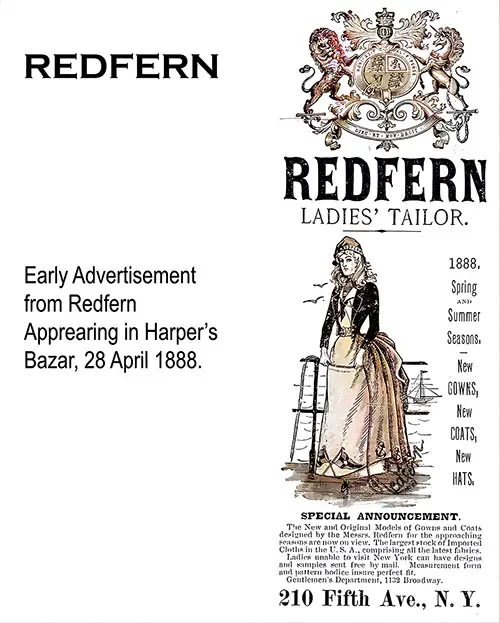
Early Advertisement by Redfern in the Harper's Bazar, April 1888. Special Announcement: The New and Original Models of Gowns and Coats Designed by Messrs. Redfern for the Upcoming Seasons Are Now on Display. We Offer the Most Extensive Selection of Imported Fabrics in the U.S.A., Featuring All the Latest Materials. As Ladies Are Unable to Visit in Person, We Are Pleased to Provide Designs and Samples Sent Free by Mail. Our Measurement Form and Pattern Bodice Guarantee a Perfect Fit. Gentlemen’s Department, 1132 Broadway and 210 Fifth Avenue, New York. (Harper's Bazar, 28 April 1888) | GGA Image ID # 225622bc59

By Appointment to H.M. the King, H.M. the Queen, and H.R.H. the Princess of Wales. Ltd. the London House Is Now Under the Direct Control of Mr. Poynter Redfern, the Founder of the Renowned Paris House of Redfern, Specializing in Sporting Costumes and Innovative Designs for Motor Car Work. Our Exclusive Offerings Include the “Crusader” Hood (Both Form and Name Registered) and Special Coats Made From Short-Haired Fur to Minimize Dust. Our Locations Include London at 20 Conduit Street and Bond Street, Where Expert Fitters Trained by Redfern Can Assist You. Models Are Produced Simultaneously in London and Paris, With Our Paris Location at 242 Rue de Rivoli. Redfern Created the Dresses Designed Specifically for Madame Jane Hading’s Performances at the Coronet Theatre in London. Since 1900, Madame Hading Has Been Dressed Solely by Mr. Redfern of Paris. (The Car, 4 June 1902) | GGA Image ID # 225a748d06

Advertisement: By Appointment. Redfern. 242 Rue de Rivoli, Paris, Dressmaker To All The Courts of Europe. (Who's Who in Paris, 1905) | GGA Image ID # 2259f94880
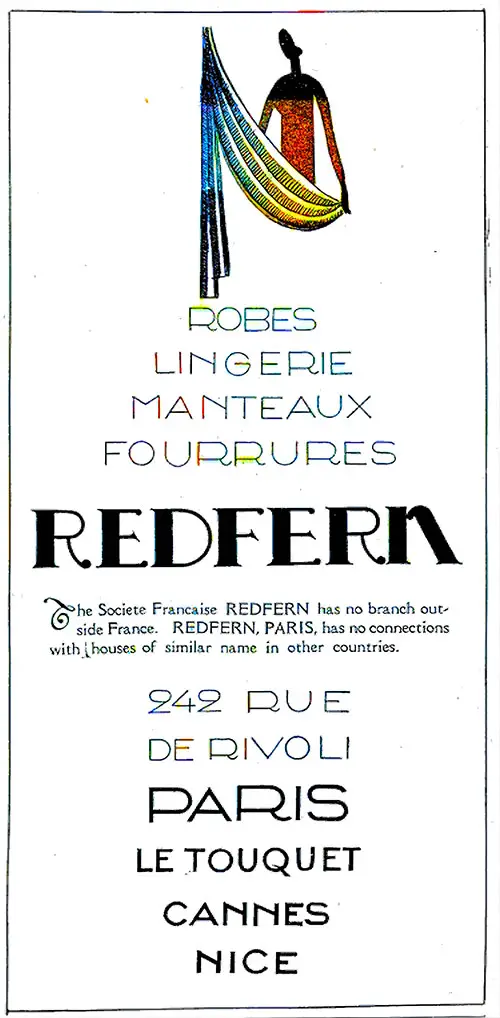
Advertisement: Redfern Robes, Lingerie, Manteaux, Fourreres, the Société Francaise Redfern Has No Branch Outside France. Redfern, Paris, Has No Connections With Houses of Similar Name in Other Countries. 242 Rue de Rivoli Paris, Le Touquet, Cannes, and Nice. (The Spur, 15 February 1927) | GGA Image ID # 22594a0e8b
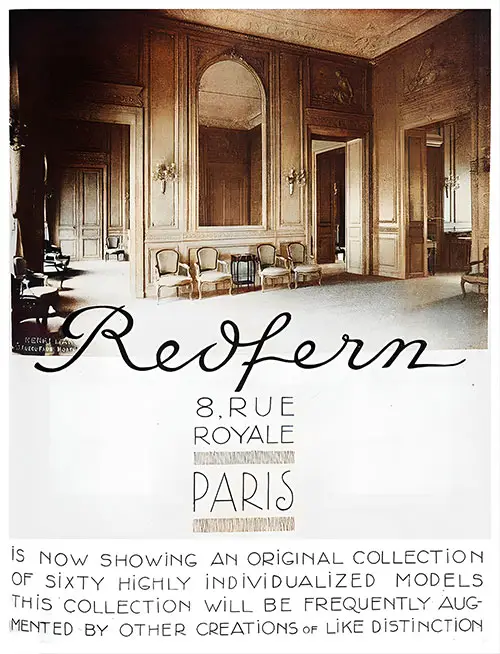
Advertisement: Redfern Paris Is Now Showing an Original Collection of Sixty Highly Individualized Models. This Collection Will Be Frequently Augmented by Other Creations of Like Distinction. (Fairchild's International, January 1930) | GGA Image ID # 225934dc67
Meeting: Redfern, Limited
THE thirteenth annual general meeting was held on July 4 at Regent House, Regent Street, W., under the presidency of Sir William Treloar, J.P. (the Company Chairman).
In moving the adoption of the report, the Chairman said: The House of Redfern in Paris has a name and reputation second to none, and our aim and endeavor will be to make the London business correspondingly famous. The London—or perhaps I should say the English—branches have been conducted on purely tailor-made lines.
In contrast, the Paris business has gained a well-deserved reputation for high-class dressmaking, owing to the energy, taste, and ability of Mr. Poynter Redfern, whose name on the other side of the Channel has become synonymous with all that is tasteful and artistic in the dressmaking world. In Paris, which is the home of fashion, an Englishman should gain one of the highest reputations in dressmaking, and establish, as he has done, a name that is world-renowned.
Our clientele includes the leading names of the world, and our Rue de Rivoli branch boasts an impressive list of royal customers. We have large orders on hand for two of the crowned heads of Europe, and it is well known that we were favored with a large portion of the wedding order for the Crown Princess of Germany.
Mr. Poynter Redfern won the Grand Prix at the St. Louis Exhibition, competing with the world's leading dressmakers. This is the highest award given, and he obtained it in the French section. However, 50 Parisian dressmakers were exhibited.
I need not tell you that the tailor-made element has become less profitable in the last few years. Therefore, we aim to introduce here in London the same high-class work that has been so successful in Paris. We do not intend to ignore the tailor-made trade, but the two can be run together, as is done in Paris.
We want to devote all our energies to London, Paris, and New York, feeling convinced that it is only in the large centers that we can rely upon the artistic workers. No one outside the business knows how much our efforts are assisted and brought to a successful issue by our workpeople. Looking at the balance sheet, I am bound to admit that it is not as good as I should wish. Still, a critical fact that encourages me is that the amount of trade done is more than the previous year.
Unfortunately, one or two elements have tended to diminish profits. First, there have been many changes in London management in recent years. Then, our Cowes business showed considerable losses, and we finally decided to close this branch. Then, owing to the change of management, we deemed it advisable to take our stock into account on a lower basis than usual.
Despite the rebuilding of Bond Street and other circumstances that have affected our profits this year, we have managed to increase our turnover. We are thankful that we have not had worse results during a year when trade conditions were very unfavorable. We look forward to better times, which have been so long delayed in London.
As soon as the London aristocracy realizes that Redfern in London is showing original dressmaking models, we shall make much trade in Conduit Street as in the Rue de Rivoli. We intend London to be in daily touch with Paris, and we have never been so well equipped with an excellent staff of fitters as we are now.
In conclusion, I want to assure you that we are committed to your interests. We are carrying forward £7,302, which is considerably more than the amount required to pay the Preference dividend for next year. So long as I remain Chairman, I hope that this plan will always be adopted. I mean that we shall, before paying any dividend on the Ordinary shares, carry forward a substantial amount so that we shall always have sufficient in hand to pay the dividend for the next year.
Mr. W. Sanders Fiske seconded the motion, which was carried unanimously.
The American Lady
By REDFERN.
To the Editor of “ Who’s Who.”
You ask me to write my opinion on the American lady in a matter of dress.
After the unfortunate remark I made last year in saying that St. Louis was not so well dressed as New York (I only meant the people one met in the street), I am glad to have a chance of saying that the American lady of means in general, ranks among the best dressed women of the world, and American ladies living in Paris have all the taste of the French in dressing with the advantage of the American figure which, in my judgment, is unsurpassed.
The French ladies have an inborn artistic taste, but the American living in Paris acquires this to a marked degree and they have that smartness which is essentially American.
Redfern.
Redfern, Poynter, Outfitter, 242 rue de Rivoli, Paris.
Tele. 240,58.
REDFERN, Poynter C., born in Weymouth, England, founded the Maison Redfern in the year 1881, and soon made his business one of the highest class in the world, obtaining appointments to all the courts of Europe. Obtained honors at each exhibition, exhibiting in the French section, the last being the Grand Prix at St. Louis. Recreation : riding ; he is also an enthusiastic yachtsman. Address : 242 rue de Rivoli,
Visiting Redfern, Limited
While strolling along Conduit Street one day, I noticed the sign "Redfern, Limited." This celebrated firm of ladies' tailors, with its rich history and legacy, had always intrigued me. I had never before visited the shop, and so I went in.
A most courteous young woman greeted me and offered to show me their new models of gowns, cloaks, and jackets. I told her I had not come to buy, and, saying that it made no difference, we proceeded through the handsomely appointed showroom towards the forms, which were fitted with the most fetching costumes. As I examined them, my eyes caught sight of some miniature models. They were an entirely new idea, and I asked permission to see them being built.
"I must ask Mr. Fred," she replied, "and if he says yes, I will show you into the work with pleasure.
Suffice it to say that "Mr. Fred" turned out to be Mr. Redfern, a son of the founder of this well-known firm, and he most kindly offered to let me see the entire establishment.
This was much more than I had expected, and we immediately went above the different fitting rooms, which were all named. There was the "Paris," "Cowes," "Yachting," "Sporting," "Velvet," "Morning," "Evening," "Ascot," "Court," "Ball Dress," "New York," "Habit," and "Theater."
Each apartment was decorated in keeping with the style of garment that would be fitted within its four walls. As we made the rounds, my guide, the forewoman, explained that most of the young women who worked in the establishment lived there, too. It was nearly noon, so we hurried to see their living rooms. These were very pleasant and included a cozy sitting room and an exceedingly well-appointed dining room.
I was invited to remain at luncheon, but wishing to see the workrooms before noon, declined and went at once above. I noticed that the heavy pressing and cutting were all done by men, and men were also busy designing the unique models and braiding patterns, for which Redfern is so noted. All the braiding was done by hand, and one beautiful bodice was beaded by hand. The apprentices and workwomen were pretty, neat, and happy-faced, and I was especially interested in the room where the miniature models were being dressed.
Every detail of the gown they represent is carried out in the models, which are more diminutive than those used by other houses. Of course, the smaller they are designed, the more difficult fashioning them perfectly. This idea, they told me, had done away with carrying such a big stock in exhibitions and gave perfect satisfaction to purchasers.
My visit to this well-established house was most instructive, and I am glad to share it with my readers, especially those who may have worn a Redfern gown.
Bibliography & Source Credits
Redfern, "A King of the Grecian Line," in The Delineator, New York: The Butterick Publishing Company, Vol. LXXIX, No. 3, March 1912, p. 190.
Paul H. Nystrom, PhD, "Chapter XI The Paris Creators of Apparel Style: Redfern," in Economics of Fashion, New York: The Ronald Press Company, 1928, pp. 214-215.
"John Redfern & Sons, Ladies' Tailors," in Modern London: The World's Metropolis, London: Historical Publishing Company, 1891, p.85
Robert Forrest Wilson, "Fashion’s Hierarchs" in Paris on Parade, Indianapolis: The Bobbs-Merrill Company, Publishers, 1925, pp. 69 and 71.
"Chez Madame Le Très Important Chapitre de La Mode La Robe," in Le Petit Mois: Supplément Illustré de la Revue des Français, Vol. 5, No. 12, 25 December 1910.
"New York.—Importance of Foundation Garment Emphasized by Fashion Coordination Chart," in The Corset and Underwear Review, New York: The Haire Publishing Company, Inc., Vol. XXXII, No. 6, April 1929, p. 101.
William H. IIngram, B.A., Ed., "The American Lady," in Who's Who in Paris: Anglo-American Coloy - A Biographical Dictionary of the Leading Members of the Anglo-American Colony of Paris, 1905, Paris: The American Register, London: The Robinson Printing Company, Ltd., 1905, pp. 71, 116, 153
"Meetings: Redfern, Limited," in The Statist: A Journal of Practical Finance and Trade, London: The Statist Office, Vol. LVI, No. 2, 8 July 1905, p. 83.
Grace Carew Sheldon, ["Visiting Redfern, Limited,] in From Pluckemin To Paris By the Way of Touraine, The Midi, Provence, The Rhone, and Eastern France, London: Wawbarn & Ward, Inc., 1898, pp. 390-392.
🧭 Relevance to Ocean Travel
Redfern’s influence wasn’t limited to land-based fashionistas—it extended to transatlantic elegance. The firm’s practical yet opulent tailoring made it a go-to name for aristocrats, actresses, and socialites traveling on ocean liners like the RMS Titanic, the Olympic, and Mauretania. Tailored travel suits, yachting jackets, and mourning wear were essentials for those at sea, and Redfern ensured they arrived in impeccable style.
🌟 Most Engaging Content Highlights
🪖 Redfern as a “Generalissimo” of Style
The dramatic tale of Redfern leading the couture defense of Paris against Vienna's fashion incursion in WWI is both humorous and revealing. Framing the designer as a military leader underscores just how high the stakes were in the global fashion hierarchy.
🎭 Fashion vs. Art in the Theater
The “Chez Madame” excerpt provides a delightful cultural commentary on the theater, where debates raged over whether the costumes or the performances were the main attraction. This piece, especially in translation, is engaging and witty—perfect for classroom discussion.
👑 Royal Patronage
Queen Alexandra's long-standing support of Redfern reinforces its prestige and historical significance. Teachers can connect this to lessons on monarchy, colonialism, or the politics of fashion.
🖼️ Noteworthy Images
Jet, Embroidery, and Lace Evening Gown – Layers of black velvet, jet fringe, and rose-colored lace evoke the height of Edwardian luxury. A perfect example of pre-war drama in dress.
Egyptian Chiffon Gown – A rich example of exotic influence in Paris fashion, ideal for comparing orientalist trends in 1910s couture.
Stunning Frocks from Redfern (1913) – These Harper's Bazar plates illustrate Redfern’s delicate balance of innovation and tradition—perfect for visual analysis.
Gown from the Maison Redfern, Paris (1901) – A late Victorian silhouette showing Redfern’s command of line and form.
Redfern Ad in Harper’s Bazar (1888) – A rare and revealing look at how haute couture was marketed to American audiences—ideal for commercial fashion studies.
📘 Brief Dictionary of Terms
Ceinture: French term for belt or sash
Empire Waist: A dress with a high waistline just below the bust
Épinglé Velvet: Velvet with raised patterns resembling pinpricks
Faille: A ribbed silk fabric known for its sheen and structure
Midinette: A young Parisian working in fashion, often romanticized in media
Mousseline de Soie: A fine, sheer silk fabric used for delicate gowns
Panne Velvet: A lustrous, flattened velvet often used in evening wear
Peplum: A short overskirt or ruffle attached at the waist
Point de Venise: A type of Venetian lace used in high-end gowns
Ruche/Ruching: A pleated or gathered strip of fabric used for trimming
🎓 Final Thoughts
This page is a treasure trove for educators and researchers. Whether you're exploring Edwardian fashion, transatlantic travel, or Parisian couture, the Redfern legacy bridges fashion, history, and culture. We highly encourage students to use the GG Archives for their essays and projects—it’s one of the most vivid, image-rich, and authentic resources available online.
